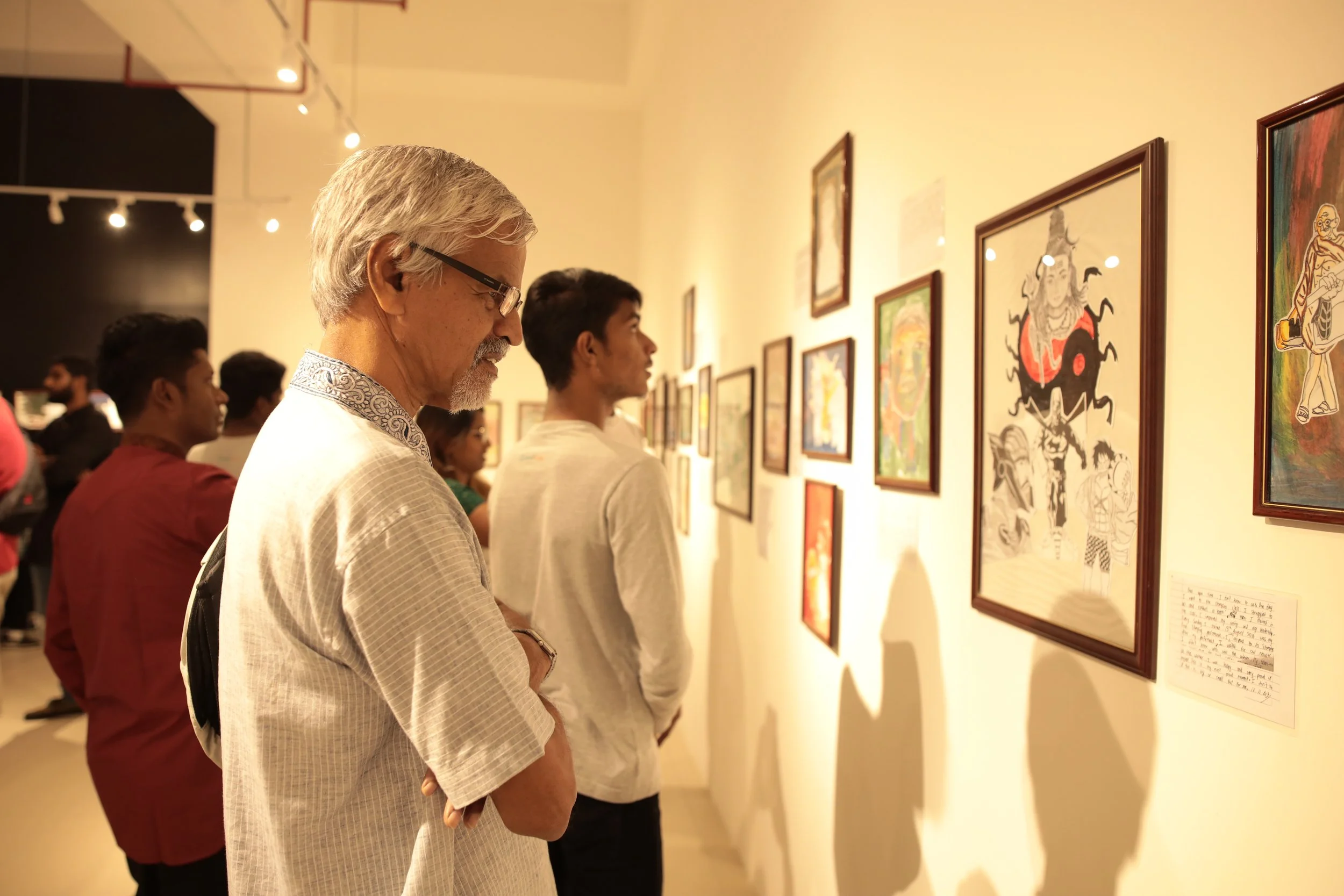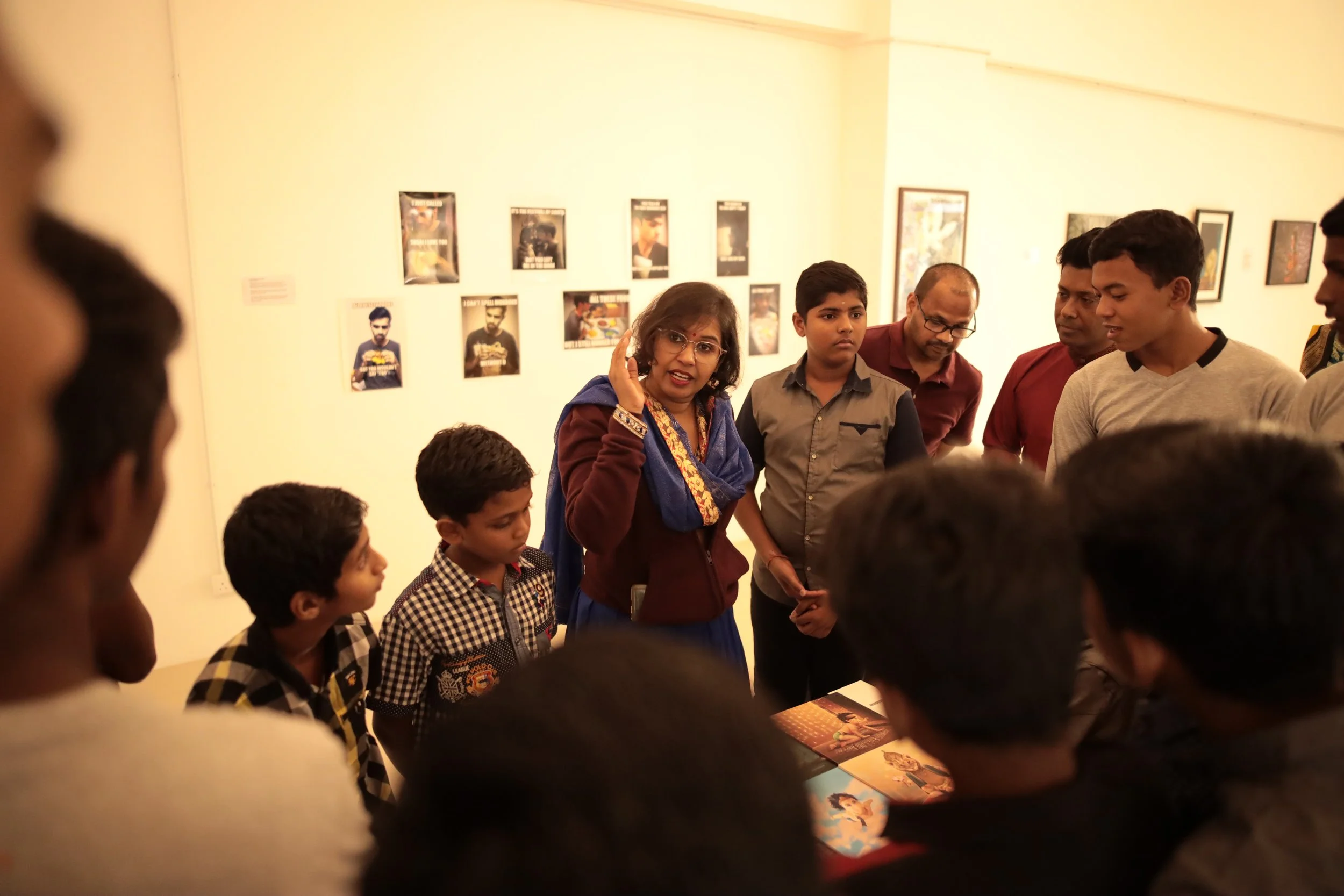Pushing Boundaries for Contemporary Malaysian Indian Artistic Expression
“I’m too tired to even protest this”
“Last night, I attended a musical performance that included a sort of medley of “performances from around the world”, one of which was “Indian”. I use this term loosely because what it in fact was, was a lazy semi-spoof of a Bollywood love song seemingly circa the 1980s – complete with badly draped saree and exaggerated hip jiggles.”
“As I watched the largely urban Malaysian audience burst into laughter and appreciative applause, I realised that I was tired.”
”I was too tired even to protest this cliched, one-dimensional performance of what was supposedly my culture – or, more accurately, what many people in Malaysia seem to STILL think Indian culture is. Tired that, even now, most of the people I share this country with don’t see that Malaysian Indian culture and India is both linked and separate, born of but grown up, rooted yet blossomed in its own myriad ways.”
- A review by art critic, Sharmilla Ganesan.
"Just like a wonderful meal at an Indian restaurant, this art curation brings together Malaysian Indians from various fields, backgrounds, and interests to showcase their work to an eager and supportive audience.“
- Uthaya Sankar SB, Writer












Photography credit to Shaadi Story, a Malaysian Indian Contemporary Wedding Videography service provider.
Telling Untold Stories
For Malaysian Tamils and those of Indian origin, our community and culture are often overlooked within the larger discourse of the country. We need continuous, stable structures and spaces to remind ourselves of the beauty of our culture and reignite appreciation.
Special thanks to GMBB, Kuala Lumpur for hosting and supporting with technical setup for this discussion.
“As a traditional art form, how do we revive it using the same method that has been used for centuries? How do we bring it alive without repeating the same patterns and format?”
Deepavali cheer through animation
“Stop motion videos require significantly more time and precision. The process of creating characters from scratch, shooting these palm-sized figurines inspired by Hindu mythology”.. Read more on Marketing Magazine, 2018.
“All our doodles were done by different doodlers that come from different races and backgrounds. It is truly unique to see someone who does not celebrate Deepavali put their spin on how they view the festival,” said Rupa Subramaniam.
— Published Interview with The Star Malaysia in 2014
Conceptualized by Rupa Subramaniam. Projection-Mapping by Lingeshwaran Gunalan. Timelapse footage of KL city Bawah Pokok Films. Direction & Filming by Thinakkaran Thamilchelvan. Editing & Audio mixed by Jonathan Rainier Peris.
According to MCMC, Malaysian Indian channels command the most loyal and longest average viewership.
Go to a typical Indian rural household and you would hear the radio turned on at sunrise. When lunch is over, SunTV feeds visual entertainment until slumber invites them to bed.
From my observation, Varnam Malaysia media is the only channel that seems to be innovating content.
There's room to do so much more.
Advertising expenditure on these platforms are significantly much lower than most others, simply because brands do not even see this racial group as a potential target audience. Don't they consume goods just like everyone else?
In a way, I believe it can be a good thing. The community is not brainwashed into consumerism as much.
But these channels that were founded almost half a century ago, are still running with old narrow mindsets without much room for critique, celebration and creativity.
Repeating production patterns since the 80s, how are they possibly going to sustain in the post-pandemic world?
Watch this 10 minutes documentary about a Hindu Temple’s religious, spiritual and a social responsibility to the well-being of its surrounding communities in Kuala Lumpur.
Director, DOP and Editing by Thinakkaaran Thamilchelvam. Assistant Editing by Vendy Wong Venli. Camera Asst. & Gaffer by Jonathan Rainier Peris. Sound Design & Music by Santosh Logandran. Illustration & Design by Thineswari Govindasamy. Creative Direction and research by Rupa Subramaniam.
Web-Documentary
Artist Statement:
After a Decade of Making “Indian Art”
I began this journey being fascinated by the depth of significance of Malaysian Indian arts and culture.
As I mature, I don’t know if it is enough. For me, for my community. It’s been getting harder to do this artistic cultural work. Both curation and creation.
1. The pandemic has brought mortality to the forefront. But I won’t accept it in the hands of the police. I stand in solidarity with the late Ganapathy, Sivabalan, Surendran, and many others who remain unnamed, and unreported: custodial deaths which continue to happen at an alarming rate. While there are grants to produce cultural work (which I’ve done since 2014) they are rejected soon as I touch on serious conversations such as police brutality.
“Dozens of Malaysian Indians Died in Police Custody. Not a Single Officer Has Been Charged.”
I began to collaborate with human rights organizations such as Amnesty International in 2020, to build a new visual language and develop new creative approaches to the themes surrounding police brutality.
However, public reception and funding have dropped 94% since previous projects.
When asked by the media about specific challenges the Malaysian Indian community face in the creative industry, my answers did not make it through the final publishing. Here are some issues I highlighted:
(1) Besides Deepavali, Malaysian Indian creatives are rarely given consideration for jobs. Even when they do, it promotes racial stereotypes. True inclusivity and intersectional representation are still infantile in Malaysian media despite the country’s ironic celebration of diversity.
(2) Our traditional art is intertwined with religion, making it difficult for others to accept or display it for the fear of offending others. This eventually brings in bigger challenges like receiving funds and getting accepted in a multi-cultural society.
(3) The creatives lack confidence, exposure and access to capacity building. This stifles their ability to network with gatekeepers and eventually suffer due to a lack of access to information and opportunities.
We’re just being casually racist,
please don’t get offended.
That’s what I hear when I get lazy excuses. It is triggering to attend a mainstream art event in Malaysia, with an intersectional-diversity lens on. It is obvious how spaces are given to the majority race and creative practitioners are blatant about it. One look at the featured artist and there’s a preference that’s obvious.
In 2022, I was horrified by the curation of The Klang River Festival which seems to erase all association with Indian people.
While the selection was diverse in terms of artistic content, I saw how this real estate funded event was attempting to elevate the market value for Klang by eradication. “The objective is to raise concerns that would help transform Klang River Valley into a better place to live in,” says Teoh Chee Keong, festival advisor.
No room was given for Malaysian Indian artists who faced discrimination over the racist assumption that Klang men are gangsters, nor those who have been affected by the flash floods wrought by the Klang River to tell their stories.
Some other examples over the years:

What more can be done to help the Tamil community to express themselves in the arts?
Education at a grass-root level, not just for the community but for the gatekeepers as well. The sense of belonging and worthiness is crucial, and when creatives don’t feel included – they feel too insecure to even apply for the opportunities being presented. So stakeholders, curators and organizations who give out grants need to go the extra mile to invite and be inclusive in the selection of the management team.
When I questioned Balai Seni Malaysia on Instagram why there were no diverse selections in their program, this is the answer I received from Intan Rafiza:
“The sharing is about the data they get and how to improve the information. It's nothing bout themselves. After this talk, we are planning to have a proper roundtable but we need to finish this series. Please come to the talk.”
When creative gatekeepers do not understand the basics of representation, it’s tough to have a conversation that can lead to solutions. I’m stuck at explaining, and educating, which is frustrating especially seeing that much of these folks are way more senior than me.






